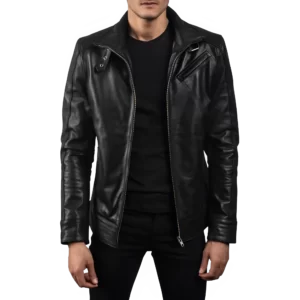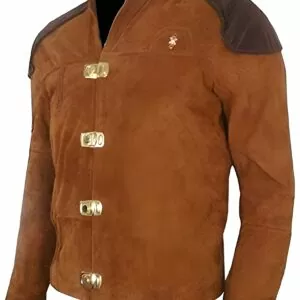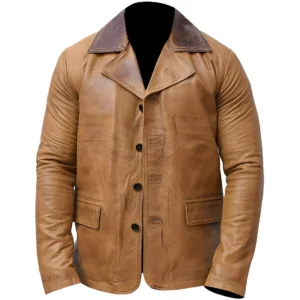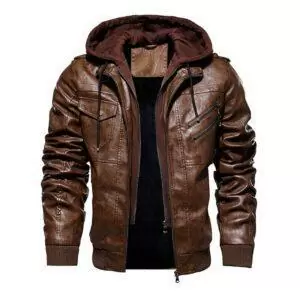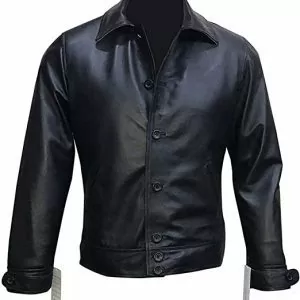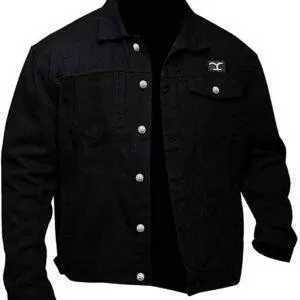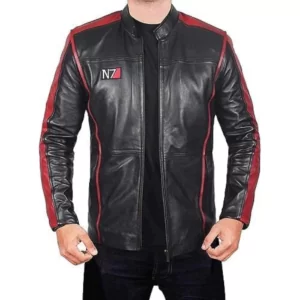
The enduring appeal of the leather jacket is undeniable. Its timeless style, rugged charm, and undeniable cool factor have cemented its place in wardrobes for generations. But when faced with the inevitable downpour, a crucial question arises: can leather jackets truly withstand the storm? Are leather jackets waterproof, or are they destined to succumb to the elements? Unveiling the answer requires delving into the intricate nature of leather itself, exploring its inherent properties, and understanding the factors that influence its resistance to water.
Unmasking the Natural World of Leather
At its core, leather is a natural material derived from animal hides. While possessing inherent water resistance due to its dense fiber structure and natural oils, it wouldn’t be entirely accurate to label it waterproof. Unlike synthetic materials engineered with specific waterproofing treatments, leather’s resistance stems from its surface tension and natural oils, which repel water droplets to a limited extent. Imagine water droplets gracefully beading off a freshly polished leather surface, a testament to its inherent defense mechanisms.
Delving into the Nuances of Resistance
However, this inherent resistance isn’t a uniform shield. Several factors influence how well a leather jacket battles the elements:
Leather Type: Different leathers exhibit varying levels of water resistance. Chrome-tanned leather, commonly used in commercially available jackets, offers moderate resistance. Full-grain leathers, known for their superior durability and natural beauty, often possess better water repellency due to minimal processing. Conversely, suede, with its velvety, napped surface, readily absorbs water, making it particularly vulnerable to rain.
Treatment and Finishing: Many leather jackets undergo additional treatment with water-repellent finishes, significantly enhancing their ability to bead off water droplets. These finishes, however, aren’t permanent and require periodic reapplication for optimal performance. Think of it as an extra layer of protection, but one that needs regular reinforcement.
Weather Conditions: While a light drizzle might initially bead off a treated leather jacket, prolonged exposure to heavier rain or submersion tells a different story. The leather eventually becomes saturated, losing its repellency and potentially leading to waterlogging and damage. Imagine the initial resistance valiantly holding its ground, only to crumble under the relentless onslaught of a heavy downpour.
-
Product on sale
 Men’s Real Leather Bomber Jacket BlackOriginal price was: $199.99.$159.99Current price is: $159.99.
Men’s Real Leather Bomber Jacket BlackOriginal price was: $199.99.$159.99Current price is: $159.99. -
Product on sale
 Warriors Viper Pilot Battlestar Galactica Jacket Brown Real Suede Leather JacketOriginal price was: $169.99.$139.99Current price is: $139.99.
Warriors Viper Pilot Battlestar Galactica Jacket Brown Real Suede Leather JacketOriginal price was: $169.99.$139.99Current price is: $139.99. -
Product on sale
 Mens Motorcycle Brown Leather Handmade JacketOriginal price was: $169.99.$129.99Current price is: $129.99.
Mens Motorcycle Brown Leather Handmade JacketOriginal price was: $169.99.$129.99Current price is: $129.99. -
Product on sale
 Mens David Beckham Black Real Leather Jacket.Original price was: $199.99.$149.99Current price is: $149.99.
Mens David Beckham Black Real Leather Jacket.Original price was: $199.99.$149.99Current price is: $149.99. -
Product on sale
 Red Dead Redemption II – Arthur Morgan Tan Brown Real Leather Jacket – RDR2Original price was: $189.99.$139.99Current price is: $139.99.
Red Dead Redemption II – Arthur Morgan Tan Brown Real Leather Jacket – RDR2Original price was: $189.99.$139.99Current price is: $139.99. -
Product on sale
 Men’s Slim Fit Bomber Hoodie Brown Biker Leather JacketOriginal price was: $179.99.$129.99Current price is: $129.99.
Men’s Slim Fit Bomber Hoodie Brown Biker Leather JacketOriginal price was: $179.99.$129.99Current price is: $129.99. -
Product on sale
 Men’s New Motorcycle Black Biker Real Leather JacketOriginal price was: $179.99.$129.99Current price is: $129.99.
Men’s New Motorcycle Black Biker Real Leather JacketOriginal price was: $179.99.$129.99Current price is: $129.99. -
Product on sale
 Men’s Cole Hauser TV Series Stylish Cowboy Black JacketOriginal price was: $189.99.$129.99Current price is: $129.99.
Men’s Cole Hauser TV Series Stylish Cowboy Black JacketOriginal price was: $189.99.$129.99Current price is: $129.99. -
Product on sale
 Mass Effect 3 Mens N7 Cafe Racer Real Leather JacketOriginal price was: $169.99.$129.99Current price is: $129.99.
Mass Effect 3 Mens N7 Cafe Racer Real Leather JacketOriginal price was: $169.99.$129.99Current price is: $129.99.
Real-World Experiences: A Tapestry of Perspectives
Online forums and review sites paint a diverse picture of real-world encounters with leather jackets and water. Some users report successfully navigating light showers with treated jackets, while others faced disappointment after encountering downpours. One user shared, “My vintage leather jacket held up surprisingly well in a light drizzle, but a sudden heavy storm left it waterlogged and stiff.” Another commented, “I always treat my leather jacket with a water repellent before the rainy season, and it’s kept me dry in unexpected showers.” These firsthand accounts highlight the diverse experiences and emphasize the role of both leather type and weather conditions in determining water resistance.
The Wet World: Practical Tips for Leather Jacket Care
While leather jackets aren’t truly waterproof, maximizing their water resistance and protecting them from rain damage is possible with proper care:
Invest in Quality: Opt for a jacket made from full-grain leather or one treated with a durable water repellent (DWR) finish. Remember, quality materials offer a stronger foundation for water resistance.
Regular Conditioning: Regularly condition your leather jacket with a high-quality product to maintain its natural oils and water repellency. Think of it as nourishing the leather’s natural defenses, keeping them supple and resilient.
Treat Wisely: Apply a DWR spray following the manufacturer’s instructions to enhance water resistance. However, remember, it’s not a permanent solution and requires periodic reapplication. Consider it a temporary boost, not an ironclad shield.
Embrace the Occasional Spritz: A light spritz of water can actually help revive the leather’s natural oils and suppleness. Just avoid soaking the jacket, as that can be counterproductive. Imagine a gentle mist refreshing the leather’s defenses, but remember, moderation is key.
Seek Professional Help: For extensive water damage, consult a professional leather cleaner or restorer for assessment and possible repair. Remember, professional intervention can sometimes salvage even heavily damaged leather, offering a second chance to your beloved jacket.
The Final Words
Leather jackets offer undeniable style and timeless appeal, but they’re not raincoats. Understanding their inherent limitations and taking proper care will ensure they continue to be treasured companions for years to come. When the skies turn grey, reach for a dedicated rain jacket for complete protection. But for those moments when a touch of style is desired, and the rain is merely a light drizzle, a well-maintained leather jacket, armed with your understanding and care, can confidently face the elements. Remember, it’


